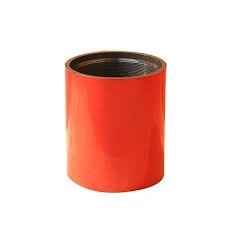- Afrikaans
- Albanian
- Amharic
- Arabic
- Armenian
- Azerbaijani
- Basque
- Belarusian
- Bengali
- Bosnian
- Bulgarian
- Catalan
- Cebuano
- Corsican
- Croatian
- Czech
- Danish
- Dutch
- English
- Esperanto
- Estonian
- Finnish
- French
- Frisian
- Galician
- Georgian
- German
- Greek
- Gujarati
- Haitian Creole
- hausa
- hawaiian
- Hebrew
- Hindi
- Miao
- Hungarian
- Icelandic
- igbo
- Indonesian
- irish
- Italian
- Japanese
- Javanese
- Kannada
- kazakh
- Khmer
- Rwandese
- Korean
- Kurdish
- Kyrgyz
- Lao
- Latin
- Latvian
- Lithuanian
- Luxembourgish
- Macedonian
- Malgashi
- Malay
- Malayalam
- Maltese
- Maori
- Marathi
- Mongolian
- Myanmar
- Nepali
- Norwegian
- Norwegian
- Occitan
- Pashto
- Persian
- Polish
- Portuguese
- Punjabi
- Romanian
- Russian
- Samoan
- Scottish Gaelic
- Serbian
- Sesotho
- Shona
- Sindhi
- Sinhala
- Slovak
- Slovenian
- Somali
- Spanish
- Sundanese
- Swahili
- Swedish
- Tagalog
- Tajik
- Tamil
- Tatar
- Telugu
- Thai
- Turkish
- Turkmen
- Ukrainian
- Urdu
- Uighur
- Uzbek
- Vietnamese
- Welsh
- Bantu
- Yiddish
- Yoruba
- Zulu
Understanding the Role of Tubing and Casing in Oil and Gas Operations
Understanding Tubing and Casing The Backbone of Oil and Gas Wells
The oil and gas industry is an intricate domain that requires advanced technology and engineering skills to extract valuable resources from beneath the Earth's surface. One of the key components of this extraction process is the use of tubing and casing. While these terms may sound technical to the layman, they play a crucial role in ensuring the safety, efficiency, and effectiveness of drilling operations. This article aims to shed light on the significance of tubing and casing in the oil and gas industry.
What is Casing?
Casing refers to a series of pipes that are installed in the borehole of a well. Once a well has been drilled, casing is used to support the walls of the hole and prevent its collapse. It also serves several important functions Firstly, casing isolates the wellbore from surrounding geological formations, preventing the migration of fluids that can contaminate underground water sources. Secondly, it provides a conduit for the extraction of hydrocarbons, allowing them to flow to the surface safely. Thirdly, casing protects the integrity of the well, ensuring that high-pressure hydrocarbons do not escape into the surrounding environment.
Casing comes in various types and sizes, tailored to the specific requirements of different wells. The production casing, for instance, is designed to withstand high pressures and temperatures typically found in hydrocarbon-bearing formations.
What is Tubing?
While casing forms the outer structure of a well, tubing is installed inside the casing. It is a smaller diameter pipe through which hydrocarbons are produced once the well has been completed. Tubing is essential for the flow of oil and gas from the reservoir to the surface. Unlike casing, which remains fixed, tubing can be easily replaced or serviced as needed without the need for extensive well work.
tubing and casing

Tubing also plays a critical role in controlling the production operations, allowing operators to manage the pressure and flow rates of the hydrocarbons being extracted. This is vital for optimizing production and extending the life of the well. Additionally, various types of tubing can be employed depending on the production conditions, including standard and coiled tubing, which can be used in both conventional and unconventional wells.
The Importance of Tubing and Casing in Safety and Efficiency
The combination of tubing and casing is paramount in ensuring the safety and efficiency of oil and gas operations. A well that is properly cased and tubed minimizes the risk of blowouts, leaks, and other hazardous situations that can arise during drilling and production. The careful selection of materials and designs for both tubing and casing mitigates risks associated with corrosive fluids, high pressures, and temperature variations.
Moreover, tubing and casing systems are designed to accommodate various interventions throughout the life of the well, such as the installation of downhole equipment, completion of hydraulic fracturing, and maintenance activities. This adaptability is crucial for maximizing the yield and economic viability of a well over time.
Conclusion
In conclusion, tubing and casing are foundational elements in the oil and gas industry, crucial for the safe and efficient extraction of hydrocarbons. Understanding their roles highlights the complex engineering challenges faced by petroleum engineers and geoscientists working in this field. As the demand for energy continues to grow and technologies evolve, the importance of innovative solutions in tubing and casing design will be vital for powering the world sustainably.
-
Tubing Pup Joints: Essential Components for Oil and Gas OperationsNewsJul.10,2025
-
Pup Joints: Essential Components for Reliable Drilling OperationsNewsJul.10,2025
-
Pipe Couplings: Connecting Your World EfficientlyNewsJul.10,2025
-
Mastering Oilfield Operations with Quality Tubing and CasingNewsJul.10,2025
-
High-Quality Casing Couplings for Every NeedNewsJul.10,2025
-
Boost Your Drilling Efficiency with Premium Crossover Tools & Seating NipplesNewsJul.10,2025







